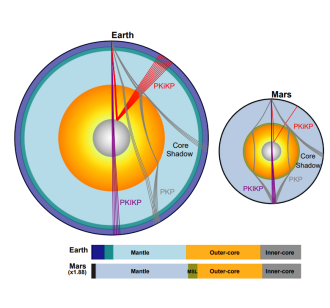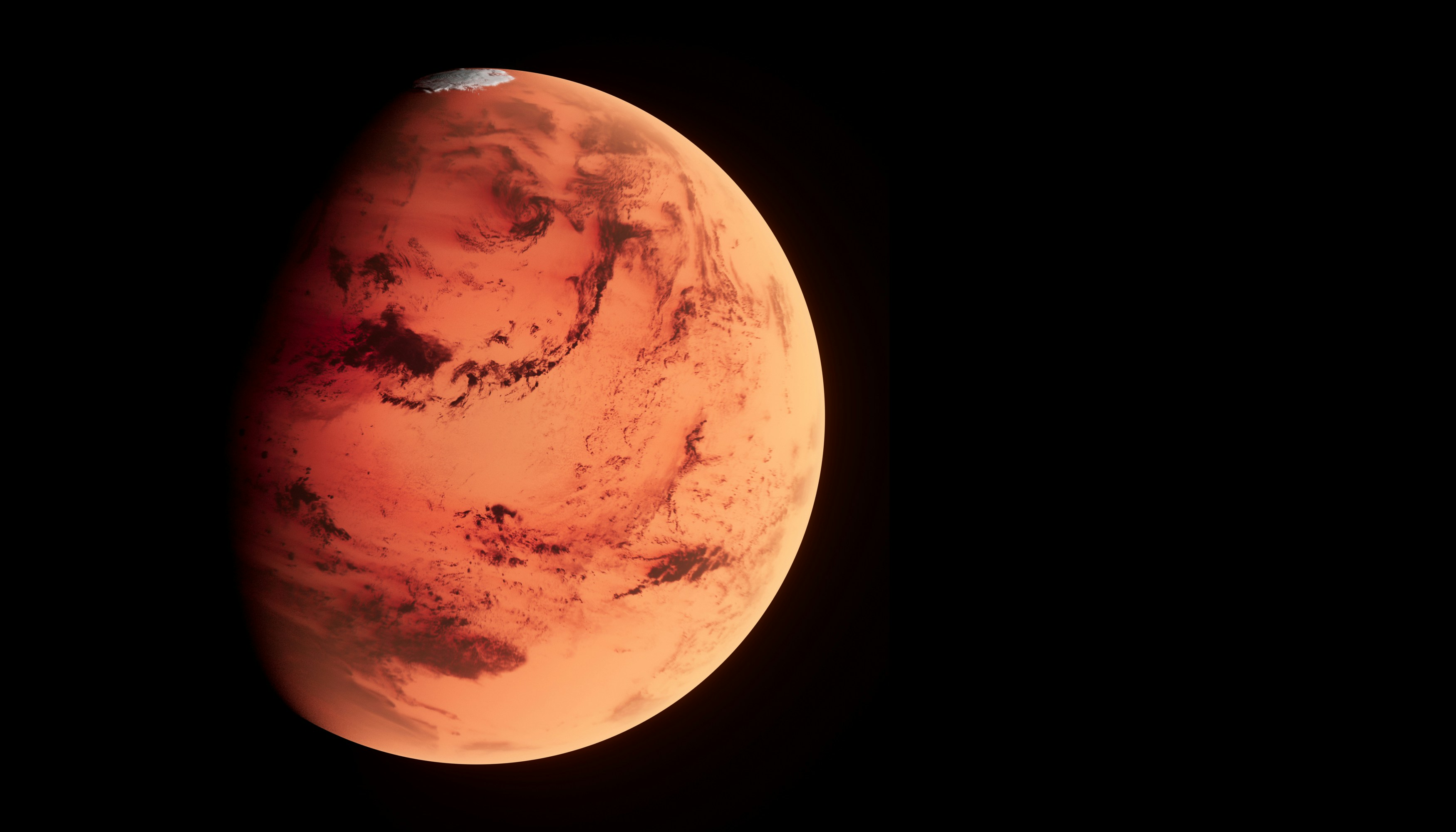Media release
From:
Springer Nature
Planetary science: Seismic detection of a solid Martian inner core (N&V) *IMAGE*
Evidence for a solid inner core in Mars, detected by NASA’s InSight mission, is presented in a study published in Nature this week. This finding furthers our understanding of the properties and evolution of both Mars and similar planetary bodies.
The inner core of Mars is known to be at least partially liquid, with theoretical work suggesting the feasibility of a solid component to the core. However, previous studies have been unable to confirm whether any part of the core is solid.
Daoyuan Sun and colleagues used seismic data obtained from NASA’s InSight mission to investigate the structure of the Martian inner core. The measurements suggest the presence of two seismic phases: PKKP (the deep core-transiting phase) and PKiKP, a reflected seismic phase used to indicate the presence of a solid inner core (as previously demonstrated for the Earth and Moon). The seismic waves from the PKKP phase arrived at the seismometer on the Insight Lander between 50 to 200 seconds earlier than would be expected if the core were purely liquid, suggesting a solid element to the core structure. Further calculations based on these figures allow the authors to constrain the radius of this inner core to about 600 kilometres.
This finding provides direct evidence of a solid inner core on Mars and offers insights into the evolution of the red planet.
Journal/
conference:
Nature
Organisation/s:
University of Science and Technology of China, China
Funder:
We thank D. J. Stevenson for his insights and discussions, which have
improved this study. We thank N. Schmerr, M. Panning and two anonymous reviewers for their
comments, which have improved the manuscript from both methodological and scientific
perspectives. We thank Q. Huang for providing the SKS_GD and SKS_GP inversion models, and
X. Song, B. Chao and H.-Y. Yang for comments on the paper. We acknowledge the National
Aeronautics and Space Administration (NASA), Centre National d’Études Spatiales (CNES),
their partner agencies and institutions (UK Space Agency (UKSA), Swiss Space Office (SSO),
Deutsches Zentrum für Luft- und Raumfahrt (DLR), Jet Propulsion Laboratory (JPL), Institut de Physique du Globe de Paris–Centre National de la Recherche Scientifique (IPGP-CNRS),
Eidgenössische Technische Hochschule Zürich (ETHZ), Imperial College London and Max
Planck Institute for Solar System Research–Max-Planck-Gesellschaft (MPS-MPG)) and the
flight operations team at JPL, SEIS on Mars Operations Center (SISMOC), Mars SEIS Data
Service (MSDS), Incorporated Research Institutions for Seismology Data Management Center
(IRISDMC) and Planetary Data System (PDS) for providing SEED SEIS data. We appreciate the
Supercomputing Center of the University of Science and Technology of China (USTC) for
high-performance computing services. This research was supported by the B-type Strategic
Priority Program of the Chinese Academy of Sciences, grant XDB41000000; the National
Natural Science Foundation of China 42241117, 42394113 and 41722401.




 International
International


